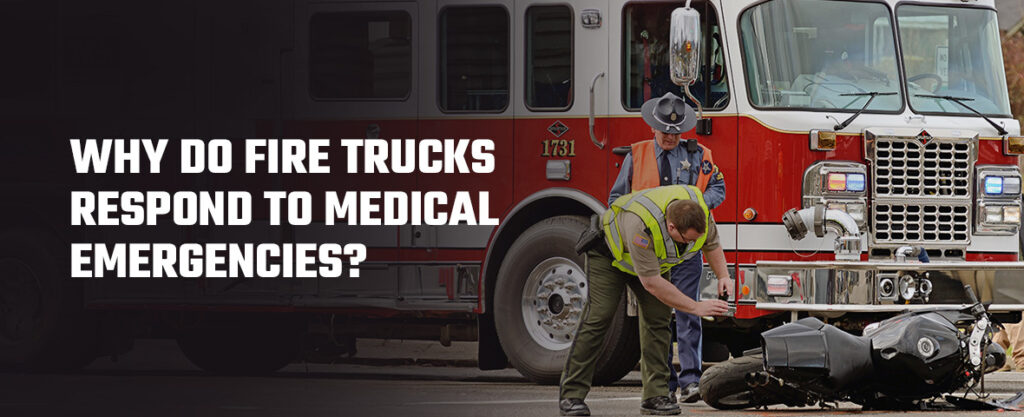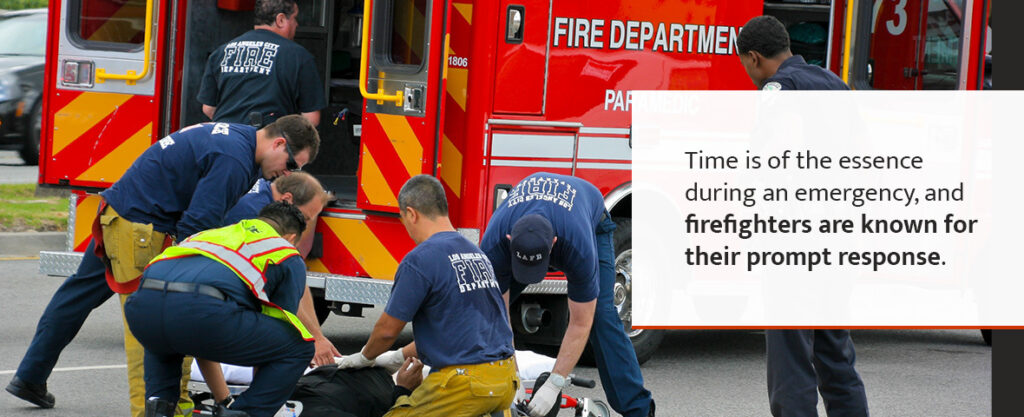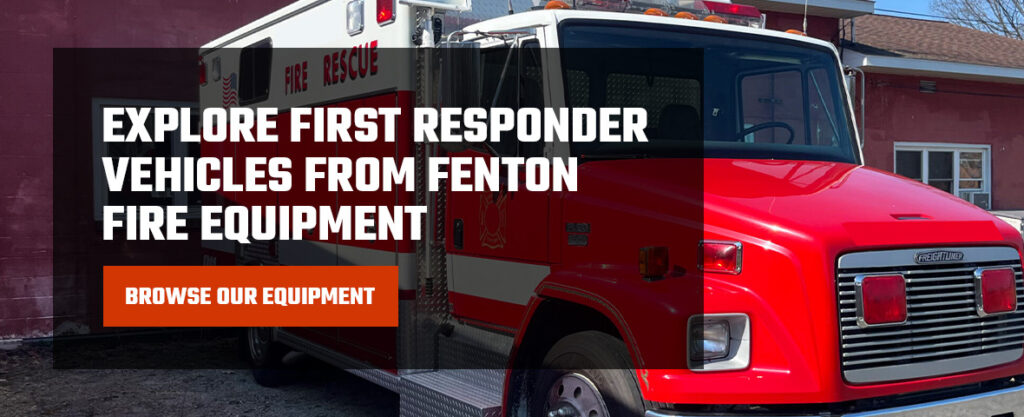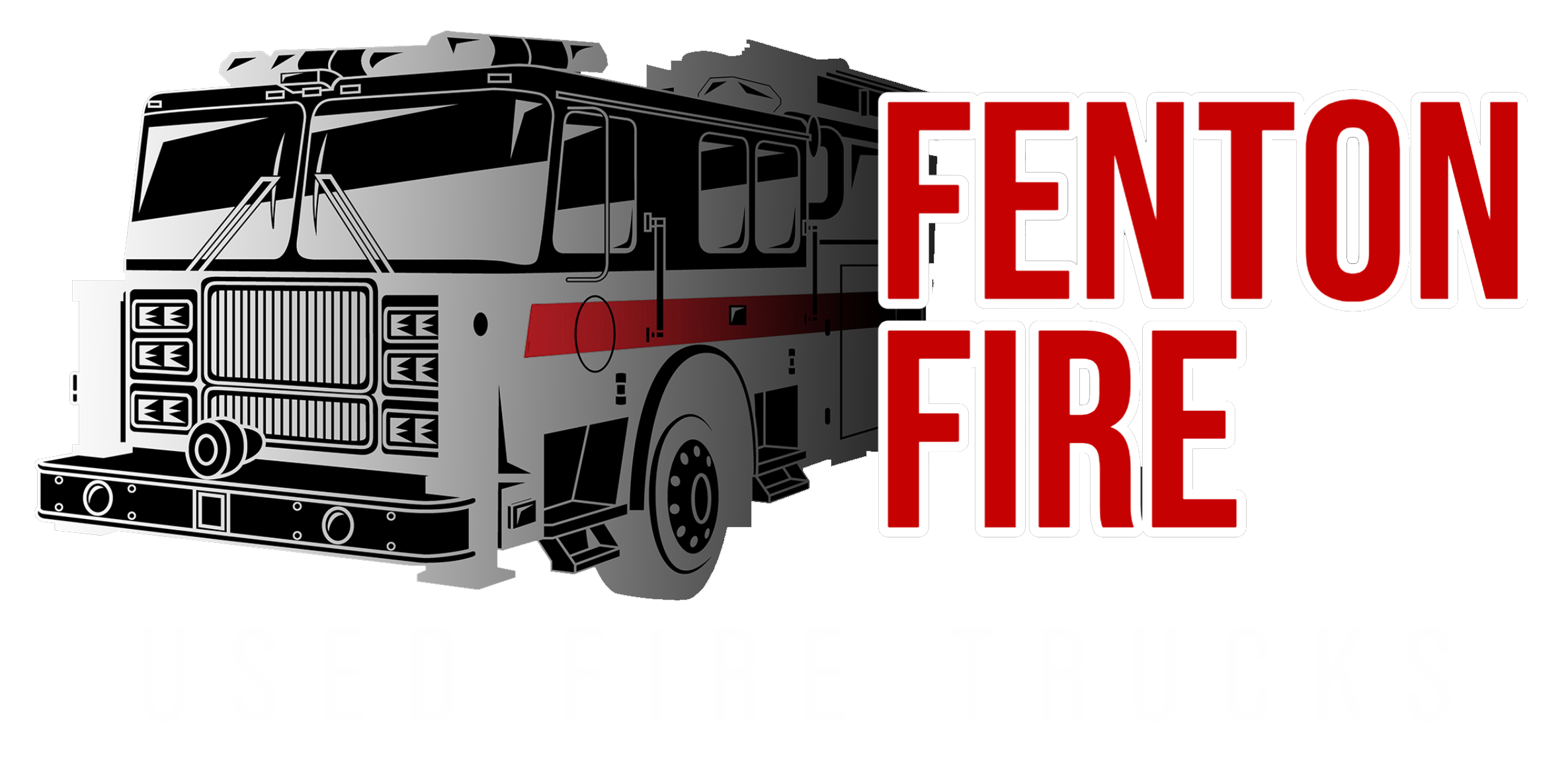
Why Do Fire Trucks Respond to Medical Emergencies?
Fire trucks respond to medical emergencies because they are equipped to provide quick help. They show up for emergency situations where properties, the environment or lives are at risk. These situations include fire prevention, search and rescue, disaster assistance, hazardous material response and emergency medical services.
Firefighters use specialized equipment and tools such as jaws of life and reels to reach people in need. When limited information is available, it’s important for all first responders to show up to ensure everyone gets the help they need.
Why Do Fire Trucks Respond to Medical Emergencies?
Fire trucks are readily available resources during high demand and are often the first to arrive at emergencies. Around 65% of U.S. fire department responses are linked to emergency medical services (EMS) and rescue calls annually. Because of their fast response times, they can assess the scene and stabilize patients before ambulances arrive. In many areas, fire departments are the primary emergency response agency.
Using fire trucks for medical emergencies ensures all available resources are efficiently deployed to save lives and provide timely care. Some important reasons for training firefighters for medical emergencies include:
- Quick response: Fire stations are strategically located within communities, allowing trucks to reach emergency scenes rapidly.
- Critical equipment: Fire trucks are equipped with essential medical equipment such as defibrillators, oxygen tanks and first-aid supplies. This equipment enables firefighters to provide immediate assistance to patients.
- Trained personnel: Firefighters undergo medical training, including emergency medical responder (EMR) certification. This allows them to assess and stabilize patients, perform CPR, control bleeding and provide basic life support until paramedics arrive.
- Collaborative support: Fire trucks often accompany ambulances during complex or critical situations. This enhances the overall emergency response capabilities in the community.
Why Does a Fire Truck Always Accompany an Ambulance?
A fire truck often accompanies an ambulance for several reasons:
- Advanced life support (ALS): Firefighters are often trained as paramedics and can provide advanced life support care, such as starting IV fluids, monitoring cardiac rhythms and administering medications.
- Additional hands-on support: Medically trained firefighters can provide extra support and backup for emergency medical technicians (EMTs) during emergencies. More hands on deck is crucial in more complex or critical situations where multiple people need assistance.
- Patient transport assistance: In cases where people need to be moved from challenging locations such as upper floors or tight spaces, firefighters can help transfer them to the ambulance using specialized equipment like stretchers.
- Backup for busy ambulances: If the closest ambulance is busy or unavailable, the fire truck can provide immediate medical care until one arrives. Paramedics on fire trucks carry ALS equipment and can start treatment promptly.
- Incomplete information: Dispatchers are often not given precise or complete information, which can make it challenging to gauge how critical a situation is. Having all first responders show up ensures patients can be rescued, protected and treated in any type of emergency.
Why Do Fire Trucks Come Before Ambulances?
We now know why they send fire trucks with ambulances, but sometimes fire trucks arrive before all other emergency vehicles.

Every emergency responder is part of a larger dispatch system in order to provide adequate coverage and manage response resources. Time is of the essence during an emergency, and firefighters are known for their prompt response.
The main reason why fire trucks arrive on a scene before ambulances is due to their geographic positioning. Fire stations are strategically located in areas so crews can get to burning buildings quickly. The shorter the response time, the more time firefighters have to rescue people and save property by suppressing a fire.
Reaching a person quickly after an incident benefits them in the following ways:
- Early assessment and stabilization: Arriving promptly allows emergency responders to assess the individual’s condition and provide necessary stabilization measures. Early intervention can prevent further deterioration and improve the chances of a positive outcome.
- Timely treatment: For conditions like cardiac arrest, breathing emergencies or severe trauma, every minute counts. Quick access to medical care can significantly increase the likelihood of survival and recovery.
- Preventing complications: Early intervention can help prevent complications that may arise if medical attention is delayed. For example, administering CPR during cardiac arrest can maintain blood circulation and oxygen supply to vital organs until an ambulance arrives.
- Pain management: Swift response can also aid in managing pain and discomfort.
- Psychological comfort: The presence of emergency personnel on the scene can provide psychological comfort to all involved during a challenging or traumatic experience.
The Role of Fire Trucks in Medical Emergencies
During medical emergencies, firefighters may perform a variety of other critical tasks, including:
- Extrication: In cases where individuals are trapped or need to be extricated from vehicles or confined spaces, firefighters use specialized tools and techniques to safely remove them.
- Lifting and moving patients: Firefighters assist in lifting and moving people onto stretchers or into ambulances, ensuring proper handling to prevent further injury.
- Airway management: They may help establish and maintain a clear airway for patients through techniques like positioning or using airway adjuncts.
- AED operation: Firefighters are trained to operate automated external defibrillators (AEDs) to deliver electric shocks in cases of cardiac arrest.
- Scene safety: They ensure the safety of the scene for responders and impacted individuals by managing hazards, controlling crowds and securing the area.
- Communication and documentation: Firefighters communicate important information about the individual’s condition to medical personnel and document observation for continuity of care.
The Importance of Firefighters’ EMR Training
Ongoing training and certification requirements ensure firefighters stay current with best practices in emergency medical care, enhancing their skills and readiness to handle diverse medical situations.
EMR training helps firefighters increase survival rates through efficient emergency response. Training makes them familiar with medical equipment such as defibrillators, oxygen delivery systems and trauma kits.
Explore First Responder Vehicles From Fenton Fire Equipment
Fire trucks play a critical role in emergency medical response. They’re often the first on the scene due to their strategic positioning, quick response times and ability to provide immediate assistance and stabilization. For fire trucks to help with medical response, they need high-quality fire equipment along with medical tools.
If you’re a fire station looking to enhance your emergency response capabilities, you can benefit from acquiring used fire trucks and equipment that have been proven effective in medical emergencies. For more info on our used fire apparatus and equipment, get in touch with our team.

